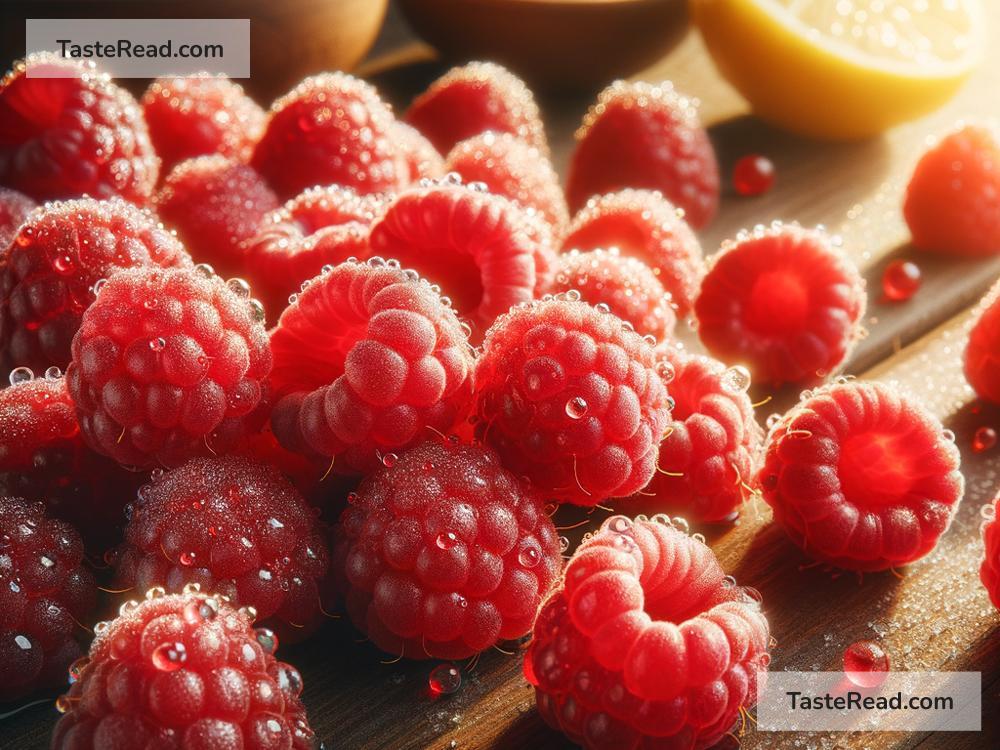Why Fruits Like Raspberries Have a Tart-Sweet Flavor
Have you ever picked up a handful of ripe raspberries and popped one into your mouth, only to be pleasantly surprised by its unique tart-sweet flavor? Raspberries, like many other fruits, have a fascinating taste that combines a sharp tangy zing with a mild sweetness. It’s a flavor most people love, but have you ever wondered why raspberries taste the way they do? Let’s explore the science behind the tart-sweet flavor of raspberries in simple terms.
What Makes Raspberries Tart and Sweet?
The secret to raspberries’ flavor lies in their natural chemistry. Every fruit contains a mix of different compounds, which affect how they taste. For raspberries, the tart-sweet flavor comes from a balance between sugars and acids. Here’s how each one plays a role:
-
Sugars – The Sweet Side
Sugars are natural nutrients found in fruit that give them sweetness. Raspberries contain compounds like glucose and fructose, two types of sugar that make them taste sweet when you eat them. As raspberries ripen, they develop more sugar, which is why ripe raspberries are typically sweeter than under-ripe ones. The sweeter the fruit, the more likely it is to attract animals (and humans!) to eat it and spread its seeds. -
Acids – The Tart Side
Acids are another important part of raspberries’ flavor. The main acid in raspberries is called citric acid, which is the same acid found in lemons. Citric acid creates that tangy or sour taste you experience with raspberries. Besides citric acid, raspberries also contain smaller amounts of other organic acids, like malic acid and ascorbic acid (vitamin C), which contribute to their tartness.
The combination of sweet sugars and tangy acids is what gives raspberries their characteristic tart-sweet flavor.
Why Fruits Have Tart-Sweet Flavors
Raspberries aren’t the only fruit with this type of flavor profile. Many fruits, like strawberries, grapes, and kiwis, also have similar balances of tartness and sweetness. But why do fruits taste this way in the first place? It all comes down to nature’s survival plan.
Fruits are part of plants’ strategy for spreading their seeds. To achieve this, fruits need to attract animals (including humans) to eat them. If fruits taste good, animals are more likely to pick them up, eat them, and help scatter the seeds in new places through their droppings.
Here’s why the tart-sweet flavor is so effective in pleasing us:
-
Sweetness signals nutrition: Sugars in fruit are a source of quick energy. When humans taste sweetness, it tells our brain, “This food has calories and will fuel me.”
-
Tartness adds excitement: The tartness we experience from acids makes the flavor interesting. Instead of being overly sweet (like candy), the tangy flavor adds a fresh, zesty edge that many people find refreshing.
By striking a balance between sweet and tart, fruits like raspberries have perfected the art of being irresistible!
Why Do Raspberries Taste Different at Times?
If you’ve ever noticed that raspberries sometimes taste more tart or more sweet, it’s not your imagination. The flavor of raspberries changes depending on several factors:
-
Ripeness
Ripeness is the biggest factor in determining a raspberry’s flavor. When the fruit is still growing, it contains less sugar and more acid, making it taste primarily tart. As the fruit ripens, it produces more sugar and less acid, which increases the sweetness while reducing the sharp tang. This is why perfectly ripe raspberries tend to taste sweeter than those picked too early. -
Growing Conditions
Raspberries are sensitive to their environment. The amount of sunlight, water, and nutrients they receive can affect their sugar and acid levels. For instance, raspberries grown in sunnier conditions may be sweeter because the sun helps produce sugars during photosynthesis. -
Varieties
Not all raspberries taste the same. Different raspberry varieties have slightly different balances of sugar and acid, so some types may naturally lean sweeter, while others are more tart. -
Storage
Once raspberries are picked, their sugar and acid levels don’t change, but their texture might. Raspberries that are stored for a long time can lose some juiciness, which might make their tartness seem stronger.
Why We Love the Tart-Sweet Flavor
The tart-sweet flavor isn’t just a yummy treat; it’s actually enjoyable for deeper reasons. The blend of tart and sweet stimulates our taste buds in a unique way. Sweet flavors are comforting and indulgent, while tart flavors add excitement and freshness. Together, they create a balanced taste that’s satisfying and attention-grabbing.
Think of other foods that balance sweetness and tanginess—it’s why lemonade is so refreshing, why apple pie tastes so good, and why people love a good sweet-and-sour sauce. Raspberries, with their natural chemistry, manage to create this perfect balance without any preparation. That’s why we think of raspberries as nature’s candy!
Conclusion
Raspberries’ tart-sweet flavor is a result of their unique balance of sugar and acid. Through ripeness, growing conditions, and natural chemistry, they’ve developed a taste that appeals to both humans and animals alike. The tartness keeps them fresh and exciting, while the sweetness makes them satisfying and delicious.
So next time you enjoy this wonderfully flavorful fruit, you can impress your friends and family by explaining how sugars and acids create such a perfect combination. Isn’t nature amazing?


